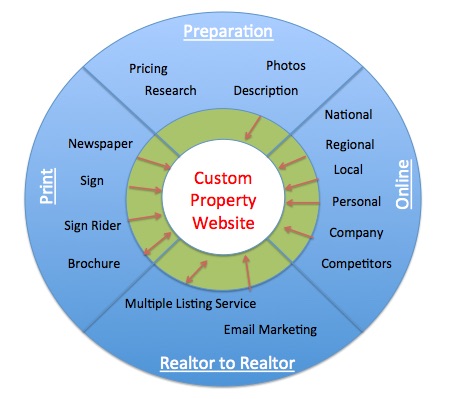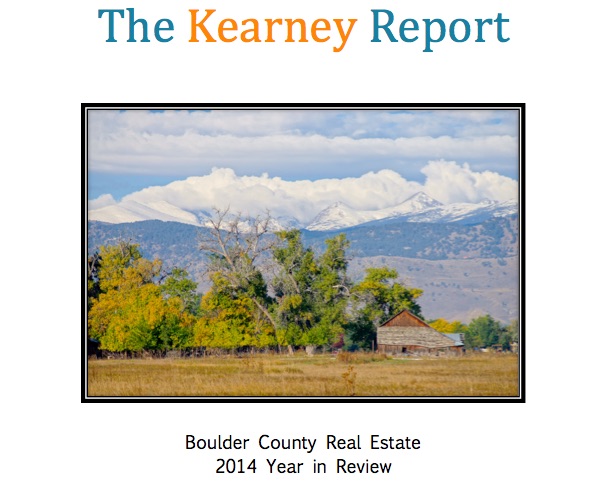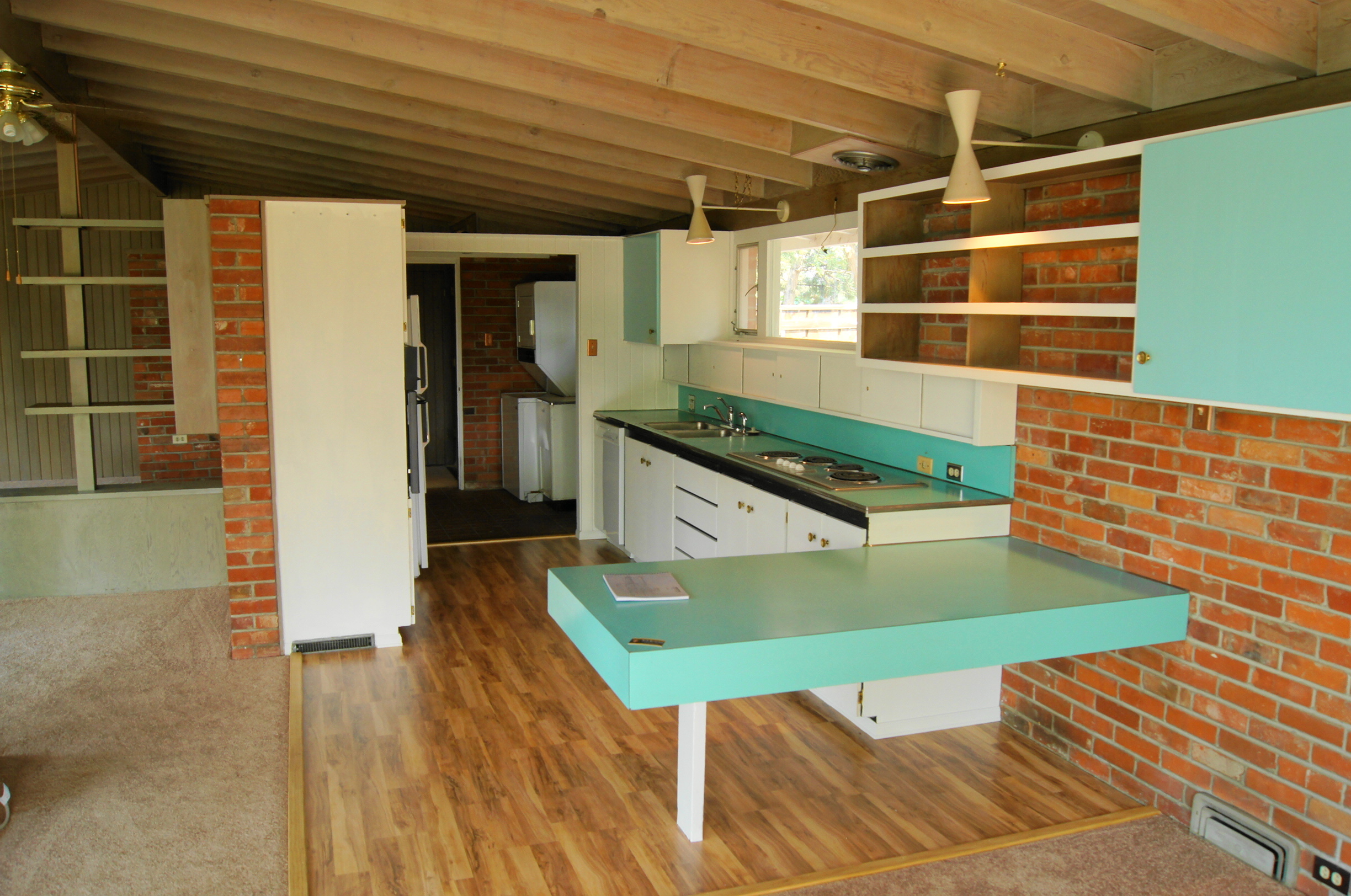
by Neil Kearney | Mar 17, 2015 | Boulder County Housing Trends, For Buyers, For Sellers
 The Boulder real estate market is currently characterized by low inventory and good buyer demand. It’s a sellers market. Many home buyers are finding that the houses that they are interested in buying are also coveted by other buyers. This leads to a multiple offer situation. A great situation to be in – if you are a seller. But for a buyer it’s a difficult situation. To see some perspectives on multiple offers from both sides, read this article.
The Boulder real estate market is currently characterized by low inventory and good buyer demand. It’s a sellers market. Many home buyers are finding that the houses that they are interested in buying are also coveted by other buyers. This leads to a multiple offer situation. A great situation to be in – if you are a seller. But for a buyer it’s a difficult situation. To see some perspectives on multiple offers from both sides, read this article.
In our area, multiple offers are most often handled in this way- the listing agent receives an offer and then lets all other agents who are showing or have showed the house know that they will be presenting the offer at a certain time and day. If another offer does come in, the first offering party is advised of the second offer and is offered the opportunity to revise their offer. For the buyer, the information available is usually only limited to the number of offers that will be looked at and when to expect an answer. This year many homes are being listed knowing that there will be much initial interest. They state clearly in the MLS listing that showings start on Saturday and all offers will be reviewed on Monday. Being the first to show the house or the first to submit an offer doesn’t seem to have any advantage.
This information gap leads to much buyer anxiety. How much should we offer? What are the other offers? Are we crazy to offer $X? Will there be another better house coming down the line that is less hassle and not priced so high? Will it appraise if we go over full price? It goes on and on and each of these questions are rhetorical.
Since I can’t answer these questions for my clients with any clarity. I rely on experience to advise them the best I can and ultimately I leave it up to them to pick a number. Sometimes we use an escalation clause to calm the anxiety a bit and to hedge an overpriced offer. In the end it’s an inexact science and the results favor the bold.
So far this year (through March 16th) there have been approximately 728 sales in Boulder County. In 27% of these transactions the buyer paid more than the listing price for the property. I can only assume that most of these 198 transactions had multiple offers. So in an effort to bring some data to the unanswerable, here are the statistics from those multiple offer situations.
- The average successful offer over all price ranges exceeded the listing price by 3.4%.
- The highest percentage paid over the list price was 44%. It was a foreclosure that was priced “well” below the current market value.
- The average price paid over list in transactions under $250,000 (39% of all transactions) was 4.42%.
- The average price paid over list in transactions between $250,000 and $500,000 (44% of all transactions) was 2.79%.
- The average price paid over list in transactions over $500,000 (17% of all transactions) was 4%.
- In 37 of the 198 transactions the buyer paid $2,000 or less over list price.
- The average premium paid across all price ranges was $13,010.
- The median premium over list price was $6,600.
- In the City of Boulder the average premium paid for those properties that sold above list price was 4.52%.

by Neil Kearney | Feb 24, 2015 | Boulder County Housing Trends, For Buyers, For Sellers, General Real Estate Advice, Real Estate 101
 In a recent article in Forbes Magazine by Mary Meehan titled “The Baby Boomer Housing Bust“, the author makes the case that in the coming years the Baby Boomers may have a hard time selling their homes to the Millenials. She states that many Baby Boomers (people born between 1946 and 1964) will need to sell their large suburban homes to finance their retirement and that the younger buyers may not be interested in buying those homes.
In a recent article in Forbes Magazine by Mary Meehan titled “The Baby Boomer Housing Bust“, the author makes the case that in the coming years the Baby Boomers may have a hard time selling their homes to the Millenials. She states that many Baby Boomers (people born between 1946 and 1964) will need to sell their large suburban homes to finance their retirement and that the younger buyers may not be interested in buying those homes.
It’s an interesting article, especially since in the Boulder area we are seeing a strong sellers market with strong demand for any property listed. But since real estate markets change and many people are talking about how the changing demographics in America will affect housing, I thought I would explore the connection between Baby Boomers, Millenials and real estate. Here are the topics I’d like to touch on:
- Baby Boomers need to sell homes to fund retirement.
- Younger buyers, including Millennials have different attitudes regarding home ownership.
- There will be an unmatched demand for the supply of homes on the market.
According to a National Association of Realtors (NAR) 2014 Generational Trends Survey, Millennials made the most real estate purchases in 2013. Here is the breakdown:
Millennials (1980 – 1995) 31% of purchases
Gen X (1965 – 1979) 30% of purchases
Young Boomers (1955 – 1964) 16% of purchases
Older Boomers (1946 – 1954) 14% of purchases
Silent Generation (1925 – 1945) 9% of purchases
For reference, here are the latest population percentages in the United States and Boulder County: Under 18 25.7% (22.9%); 18-24 9.6% (13.4%); 25-44 30.2% (33.6%); 45-64 22% (22.3%); 65+ 12.4% (7.8%).
My takeaways from this are: The Baby Boom generation is roughly 25% of the population. I always had the perception that the 65+ cohort was a bigger percentage. I know that it’s growing, but it’s in the future, not in the present. And did you notice the low percentage of retirees in Boulder County? Just 7.8% of our local population.
Some facts about the Baby Boomers:
- The youngest of the 78 million Boomers are turning 50 this year.
- 10,000 Boomers a day are turning 65 years old, this will happen every day through 2030.
- Younger Boomers have less savings and a lower homeowner rate than older Baby Boomers.
- Boomers own 32 million single family homes.
- They have had a great run in the real estate market. Owning a home has been a great investment.
- So far, this generation has been net even in the housing market. When they sell one, they buy one. This will change but will the Millenials be ready to buy?
Some Facts about Millennials:
- They are the second largest generation.
- Despite the housing crash in 2008, 2/3 believe that owning a home is essential to living a good life.
- This generation is delaying home buying due to high student debt and a tough job market.
- Despite having a delayed start in the housing market Millenials bought the most homes in 2013 (see above).
- The U.S. housing market saw it’s first sustained downturn during many of the Millenials first buying/owning experience. This has led to a more subdued mindset about housing.
Are The Baby Boomers Ready For Retirement?
In the 2013 Retirement Confidence Survey conducted by the Employee Benefit Research Institute (EBRI), workers aged 55 and older said the following about their retirement savings:
- 60% have less than $100,000 in retirement savings
- 43% have saved less than $25,000
- 36% have saved less than $10,000
As a point of reference, of all workers surveyed:
- 76% have less than $100,000 saved
- 57% have less than $25,000 saved
- 46% have less than $10,000 saved
Despite the apparent lack of adequate savings, 70% of all workers surveyed also said they believe they are “doing a good job of preparing for retirement”—even though only 46% of all workers surveyed have a retirement plan!
According to the information above it’s clear that many Baby Boomers are not ready for retirement. Selling their family home and moving to a lower priced home and supplementing their retirement with the difference seems to be a key component to many “plans”.
Are Millenials Interested In Boomers Homes?
During the last fifteen years Baby Boomers have been purchasing upgraded homes and second homes. Generation X who are on the heels of the Boomers, are a smaller generation and after the economic downturn are in recovery mode. Gen X won’t be able to buy all of the homes that Boomers are getting ready to sell. Millenial generation home buyers have been less interested in size and more interested in location. So far, being near the action is more important that having a status symbol. This generation is large but is just getting geared up in the home buying cycle. So far, demand has met the supply of homes but as more and more Boomers sell their large homes the younger generations may not be interested in them. Especially if it’s large and suburban.
Will Supply and Demand Meet?
The latest US Census data suggests that the population in the United States will grow 27% between 2015 and 2060. As a friend of mine says “clearly there will be a set of cheeks for every seat”. In fact for the foreseeable future, home builders will need to stay busy to keep up with demand. So the question in my mind is not a question of scope but of type. There will clearly be enough home buyers to meet the seller demand but will the price range, type and location meet the buyers desires. Those Boomers with McMansions away from urban areas may find decreasing demand for that type of housing in the future.
The Local Spin
According to a recent National Association of Realtors report both Millenials and Baby Boomers see the Denver area as one of the top areas in the country to relocate to. I have found that I’m working with many more experienced home owners who are looking to the Boulder area as a place to retire. College towns are especially popular throughout the country although Boulder is rare in that the home prices prohibit less affluent people from retiring here. Millenials follow lifestyle and jobs and the Front Range of Colorado including Boulder County has plenty of both. So in my mind, as long as the lifestyle and economy stay favorable, we will still have people wanting to live in the Boulder area.
My Conclusions
As more and more Baby Boomers retire, the real estate market will take on a different character. Many Boomers will downsize and while there will be a demand for their homes, price appreciation may stagnate over time. Millenials may not have the exact same taste in homes than do the Boomers, but as the U.S. population grows towards 400 million people in the next 40 years, the demand for housing will expand. And as Will Rogers said “Buy land. They ain’t making any more of the stuff.”
Additional Articles
NAR Field Guide to Millenial Home Buyers
Why Millennials Don’t Trust Ads, Real Estate or Social Security

by Neil Kearney | Feb 4, 2015 | For Sellers
It used to be that to market a home meant putting a sign in the yard, copying a few brochures and placing the home in the local MLS service. Back in the day of MLS books, buyers and realtors had to wait a week for the book of listings to be updated. Now, the speed of information is almost instantaneous and it takes a diverse mix of marketing methods to attract buyers and maximize seller return. My goal is to maximize the appeal of my listings to prospective buyers through impeccable preparation, high quality deliverables and a beautiful Internet presence that gives each and every listing the custom feel that buyers appreciate. I fulfill this goal through the execution of my highly effective and proven marketing plan that puts the home, not the agency in the forefront.
The first step in my premier marketing plan is in detailed and early preparation. Your house deserves professional and experience representation and this begins long before the sign is placed in the yard. The first step in the preparation phase is to price the property correctly. Proper pricing results in maximizing the sales price for the Seller while still staying attractive to potential Buyers. Correct pricing takes into account comparable sales, the location, the condition of the property, the current market conditions and the competition. I take great care in analyzing and comparing your property to other homes with specialized spreadsheets I have developed over time that help us decide on the right price.
Once the price is set and the listing papers are signed, I go to work to maximize the appeal of the home by taking great photos and writing a compelling description. To many listings describe the property in terms of facts. I strive to describe the home as a lifestyle, a place to make memories, a place they want to live. The goal of the photos and remarks is to make the buyer want to look at the property in person. Almost all potential buyers are viewing listings online. Our first showing is online and the goal of my marketing is to make the buyer want to see the property in person.
After the photos are done and the description is written, my hub and spoke marketing plan is implemented. The hub is a custom website that I build from scratch. This is a true custom website developed from scratch and with it’s own website address. On this website I can tell the full story of your home, display all of the photos, describe the location, the neighborhood, display links to the HOA, show the brochure and the MLS sheet, etc. When a buyer wants more information we want more than 500 characters (the limit on MLS and other online sites) to tell the full story of why this home is different and why they should see it. The custom website is where interested buyers go to get the information they want and it’s where they send their family to share their excitement. This is where we point all of our other marketing. This is where we can give a full and controlled experience to our potential buyers.
 The spokes of my premier marketing plan includes print, online and Realtor-to-Realtor advertising. The diagram on this page shows how I use a broad spectrum of marketing methods to reach potential buyers. All of my marketing is done with a feel of substance and quality.
The spokes of my premier marketing plan includes print, online and Realtor-to-Realtor advertising. The diagram on this page shows how I use a broad spectrum of marketing methods to reach potential buyers. All of my marketing is done with a feel of substance and quality.
Print marketing includes a sign, custom brochures, a sign rider with the website address and consistent display advertising in the Daily Camera.
Our strategic online marketing includes websites across all sectors. These include national websites such as Realtor.com and Redfin.com. Regional websites such as Coloproperty.com. Local websites such as AtHomeColorado.com. Competitor websites such as Remax.com, COHomefinder.com, and wkre.com. Of course your property will be featured on the KearneyRealty.com and NeilKearney.com websites as well. The goal of online marketing is to impel the buyer to take the next step.
Our marketing to other Realtors includes a thorough MLS listing, which includes the compelling description and beautiful photos and email marketing to our local list of over 800 agents. With the MLS listing, it’s important to have done all of the prep work upfront because you only have one chance to make a good first impression. I have established a reputation among my peers based on impeccable ethics and easy communication. Other agents like working with me and they know when they bring an offer it will be handled promptly and with complete integrity.

by Neil Kearney | Feb 2, 2015 | For Buyers, For Sellers
I just received this letter of recommendation from a recent client. I loved working with them and I’m so happy that they appreciated my efforts and the results. The website for their home that I built is located at www.SunriseRanchHome.com
“Though we find it hard to express how much we appreciate and value Neil Kearney’s professional, ethical, kind and extremely effective representation of our home, it was not difficult for Neil to describe and represent our home in a way that was extraordinary.
From the moment we met Neil, we knew we had found the realtor who was looking out for our interests and advocating a sales plan that would ensure the most for our investment. Neil took extraordinary, professional photographs of our home, and his images and words in a beautiful brochure and amazing website created for our home reflected his passion for his job and for representing his clients in a way that is unsurpassed.
You could not hope to find a more experienced, more professional realtor to get the absolute best value out of your property – but the bonus is that you will undoubtedly find a friend. Our sale and purchase experience were benefited by his calm good humor and his expert eye – pointing out the problematic stucco, or the vacant lot across the street zoned for commercial development. Neil is extraordinary at his profession – skilled, calm and phenomenal – our recommendation is without reservation, and WITH great enthusiasm.”
Brad and Cindy Taylor
Former Director of Consumer Protection for the Boulder County D.A.’s office
I always have the capacity to work with new clients, so if you are looking for the type of service that is described in the letter above please contact me to get started. 303-818-4055 cell or Neil@KearneyRealty.com

by Neil Kearney | Jan 20, 2015 | Boulder County Housing Trends, For Buyers, For Sellers, Statistics
The Kearney Report – Year in Review 2014
I have just finished compiling the year end market data and have just published “The Kearney Report – 2014 Year In Review”. If you are interested in learning about the real estate market over the past year and how it relates to overall trends over the past fifteen years, I would encourage you to view and download the report. To view the report scroll down and read it on this page. If you would like to view it as a PDF for easy printing click here. I take the time to produce the report so that my clients and you (whomever is reading this) can better understand the market. From good information comes good decisions!
2014 Boulder County Real Estate Market Summary
2014 started out very strong and continued in a healthy manner throughout the year. It was definitely a sellers market. Throughout the spring, the combination of low inventory and high demand made it difficult and frustrating to be a buyer. Multiple offers were very common and in many situations, full price wasn’t enough to win the negotiation. Throughout the spring, home values increased.
By mid June, the pressure of the market had eased a bit. All of the fundamentals in the market were still in place but just less intense. More houses were coming on the market and that supply brought the market back closer to equilibrium. The fall continued in a similar fashion with even fewer houses coming on the market. In 2014, it took on average 38 days to find a buyer and accept an offer. This is a full week quicker than 2013 and a full 49 days quicker than 2010. Low inventory and good buyer demand were the trends for 2014.
The Causes and Effects of Price Appreciation in Boulder County
Using a simple measure, median prices of homes and condos in Boulder County increased by 5.5% this year. Last year they were up 6% using the same math. FHFA the national agency which tracks home sales for the Federal Government reported that the home values in Boulder County increased in value by 8.35% for the one year period ending on September 30th (see this represented graphically on page 4 of this report). Homes have appreciated over the past three years, which has erased the affects of the economic downturn. What I’d like to touch on are the causes of the appreciation locally and the effects of the appreciation we are seeing in the market.
Boulder County didn’t go through the boom and bust cycle between 2006 and 2011 that much of the country experienced, so our recent appreciation can’t be explained by saying it is a bounce. A return to historical value. Home prices are now 17% above where they were 5 years ago. Over the past three years I point to three major factors that contributed to our appreciation; low supply of homes on the market, strong buyer demand caused by a strong local economy, low interest rates.
The supply of homes on the market comes from two main sources, resales and new construction (note we don’t have, nor have we had a large supply of foreclosure homes, this has been another source in other areas). Both sources of supply have been constricted since 2008. Existing homeowners have increasingly been sitting out of the market. Many feel that while it would be easy to sell their home it would be difficult to find an acceptable replacement. If you have enough people thinking along these lines it becomes a self-fulfilling prophecy. The economic downturn was difficult on home builders and their banks forced them to sell existing supply and to stop building spec homes. The supply of new homes was a trickle in 2009 and 2010. Builders are now up and running but they can’t keep up with buyer demand. They are also constricted by a lack of tradesman due to so much commercial construction.
The US Census Bureau estimates that Boulder County grew by 5.3% between 2010 and 2013. This means that 15,000 new people moved to our county. Given that there are on average 2.42 people in a household in Boulder County this means that there are over 6,000 new households in Boulder County over the past four years alone. People are moving here because of our robust economy and available jobs. This equation has led to the construction of many new apartment buildings, rising rents and a very tight real estate market with low inventory and rising prices.
The last factor causing appreciation is low interest rates. Affordability has two multipliers; price and cost of money. If one stays low while the other rises, affordability stays reasonable. If both rise, demand falls. For the past six years interest rates have been very low so as prices have risen the out of pocket expense is still reasonable. From the buyer’s perspective, if they need to be aggressive on price in order to get a home, they can do it because they can still easily afford the payment. Sellers have been able to ask more for their homes and buyers have had the ability to afford the payment and the will to beat out their competition.
As you browse through the rest of the report you will find, for comparison purposes, a number of market measures displayed for each of the submarkets in our area. Enjoy the report.

by Neil Kearney | Aug 19, 2014 | For Sellers, General Real Estate Advice
 As a Realtor, I see many houses each week. Each house is different but all houses have one thing in common. At one point they were brand new and shiny. The pride of the new home owners. But time moves on and what was once new isn’t the latest and greatest any more. Home ownership is a process, it isn’t a one time deal. In order to get the most out of your investment you need to keep up on it and improve it and this is most easily done incrementally.
As a Realtor, I see many houses each week. Each house is different but all houses have one thing in common. At one point they were brand new and shiny. The pride of the new home owners. But time moves on and what was once new isn’t the latest and greatest any more. Home ownership is a process, it isn’t a one time deal. In order to get the most out of your investment you need to keep up on it and improve it and this is most easily done incrementally.
I go out to look at houses and find that many original owners liked their choices of carpet, counter tops and wallpaper so much that they haven’t changed them for 20 or 30 years. Many times these houses are well maintained but they are not updated. To the owner it’s fine. To a prospective buyer it’s a fixer upper!
This brings me to Kristy’s rule for home ownership (Kristy is my wife). In order to keep on top of a house you must do one project a year. This could be new counter tops or new carpet or new paint or new flooring in the bathroom or new doorknobs on the interior doors or … The list is endless and it depends upon the house about what needs to be done.
Action Step: Write out a list of needed projects without the baggage of how hard or expensive it will be. Prioritize the list in terms of needs. Then re-priortize the list in terms of cost and logistics. The main objective is to know what you need to do and then get started on it. If your first project will take 7 years to pay for, most likely nothing will get done. So my advice is to knock off a few ‘easy’ projects first.
Page 3 of 13«12345...10...»Last »

 The Boulder real estate market is currently characterized by low inventory and good buyer demand. It’s a sellers market. Many home buyers are finding that the houses that they are interested in buying are also coveted by other buyers. This leads to a multiple offer situation. A great situation to be in – if you are a seller. But for a buyer it’s a difficult situation. To see some perspectives on multiple offers from both sides, read this article.
The Boulder real estate market is currently characterized by low inventory and good buyer demand. It’s a sellers market. Many home buyers are finding that the houses that they are interested in buying are also coveted by other buyers. This leads to a multiple offer situation. A great situation to be in – if you are a seller. But for a buyer it’s a difficult situation. To see some perspectives on multiple offers from both sides, read this article.







